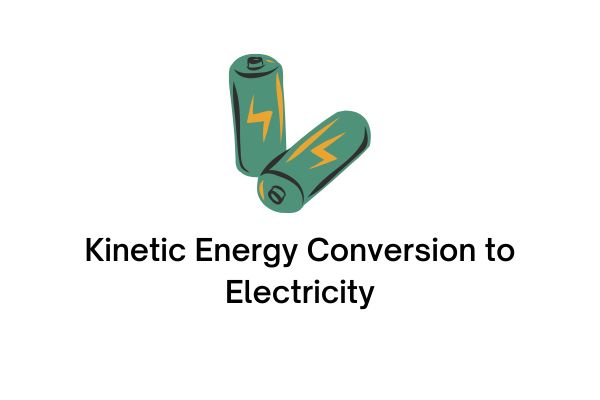Kinetic energy can be converted into electrical energy in various ways. Examples of kinetic energy converted into electrical energy can also be found in everyday life. The following are some examples of kinetic energy converted into electrical energy:
Daftar Isi
1. Energy Changes in Generators
A generator is a mechanical device that has the ability to convert kinetic energy into electrical energy. The energy source used to drive the generator varies depending on the type of power plant used.
For example, in a wind power plant, the generator will rotate because of the windmill in it. Likewise in a hydroelectric power plant, where the kinetic energy from the flow of water is used to drive the generator.
While in conventional power plants, the kinetic energy required by the generator is obtained from the fuel combustion process. Thus, the generator has an important role in converting various forms of energy into electrical energy that can be used for various purposes.
2. Energy Changes in Dynamos
A vital element in the electrical system, the dynamo plays an important role in converting kinetic energy into electrical energy through the process of magnetic field induction. When a bicycle moves, the dynamo works to convert its kinetic energy into electrical energy stored in the battery.
The energy produced is not only used to power the bicycle, but also to light the lights and even charge devices such as mobile phones.
Thus, the dynamo not only allows the bicycle to operate efficiently, but also increases its functionality by providing additional electrical power for various purposes.
3. Energy Conversion in Water Wheels
The energy conversion in water wheels is one example of kinetic energy into electrical energy. Water wheels are one source of energy that has long been used by humans to generate power.
With the strong rotation of the water wheel, its kinetic energy can be converted into various forms of power, one of which is electrical power. This phenomenon mainly occurs when the water wheel is exposed to a fast and strong water flow. The faster the water flow, the greater the kinetic energy produced.
This can be seen, for example, in waterfalls, where the force of water falling from a height produces great kinetic energy. Because of this significant kinetic energy, waterfalls are often used as power plants, making an important contribution to providing clean and sustainable energy resources.
4. Energy Changes in Generators
A generator is a combination of a power generator and a driving engine integrated into one unit to produce electrical power. Usually, the driving engine in a generator is a motor or diesel engine that uses diesel fuel or other types of fuel.
The main function of this driving engine is to produce mechanical energy which will later be converted into electrical energy by the generator.
In other words, the generator is responsible for converting mechanical energy into electrical energy that is ready to use. With the presence of a generator, a system is created that can generate electricity independently without having to depend on external power sources.
This is very important especially in emergency situations or in locations that are not covered by the public electricity network. Generators are an efficient solution for providing backup or temporary electricity supplies in various conditions, be it for industrial, commercial, or domestic purposes.
5. Energy Conversion in Windmills
One significant form of renewable energy is the windmill energy source, which relies on the power of wind motion to generate electricity. Compared to conventional energy sources, the energy produced by windmills is considered clean and environmentally friendly.
The use of wind energy as a source of windmills is also included in the alternative energy category, providing a sustainable option to reduce dependence on limited fossil fuels.
The flexibility of windmill installation also allows a wide area, from individual installations in homes to large-scale wind power plants, adjusted to local energy needs.
Through its contribution to reducing carbon emissions, windmills play an important role in global efforts to combat climate change and improve overall environmental quality.
6. Energy Conversion in Turbines
Turbines play an important role in converting fluid energy into mechanical energy. The source of fluid energy can be gas or liquid flowing through the turbine. The energy conversion process occurs when the working fluid exerts force on the turbine blades, causing rotation on its axis.
This rotational movement is then converted into mechanical energy that is useful for driving machines, industrial equipment, or generating electricity through generators.
That is an example of kinetic energy into electrical energy. The change of energy from kinetic to electrical energy makes an important contribution to meeting our energy needs. By continuing to develop efficient and environmentally friendly technologies, we can utilize this energy source more sustainably for a better future.
Read Also:
